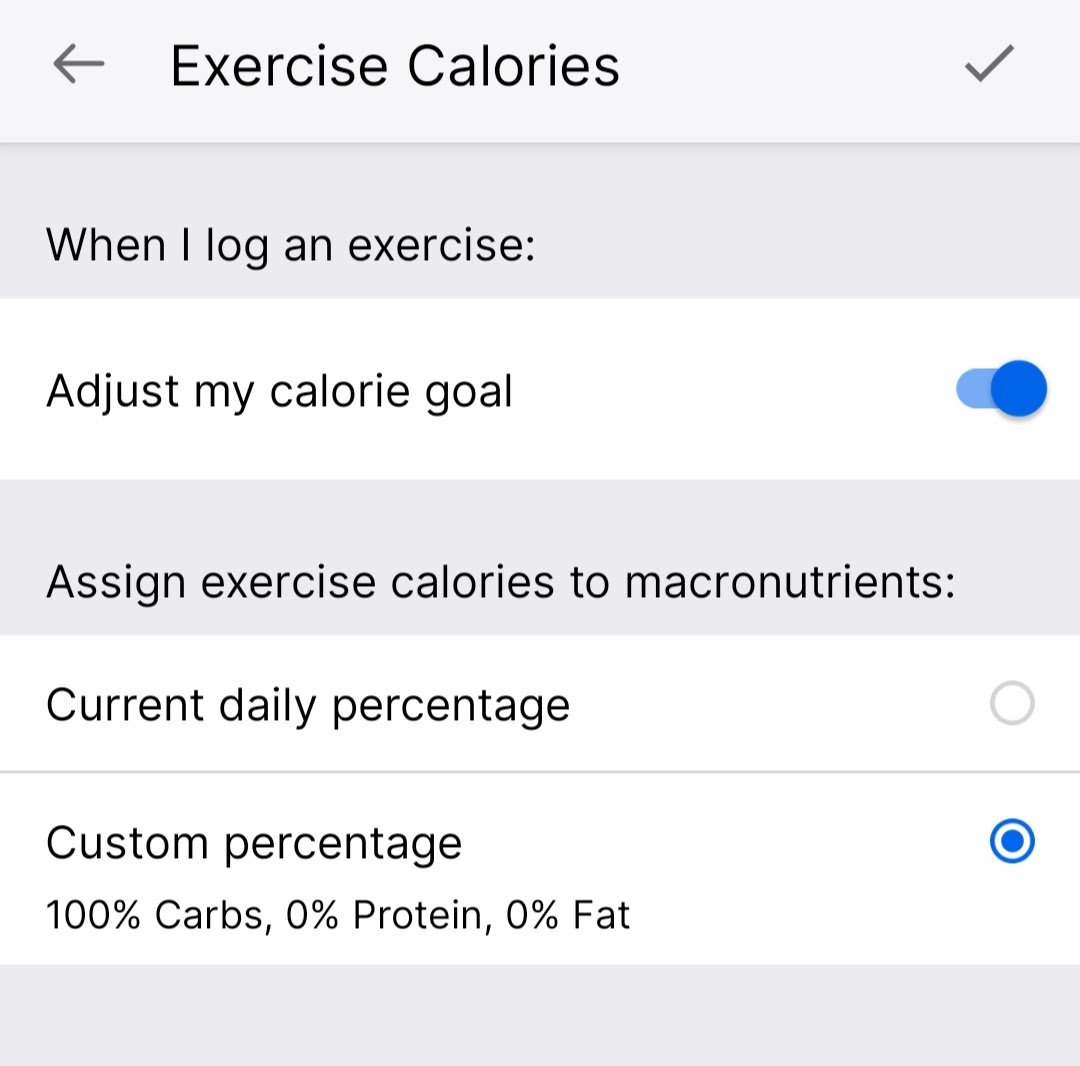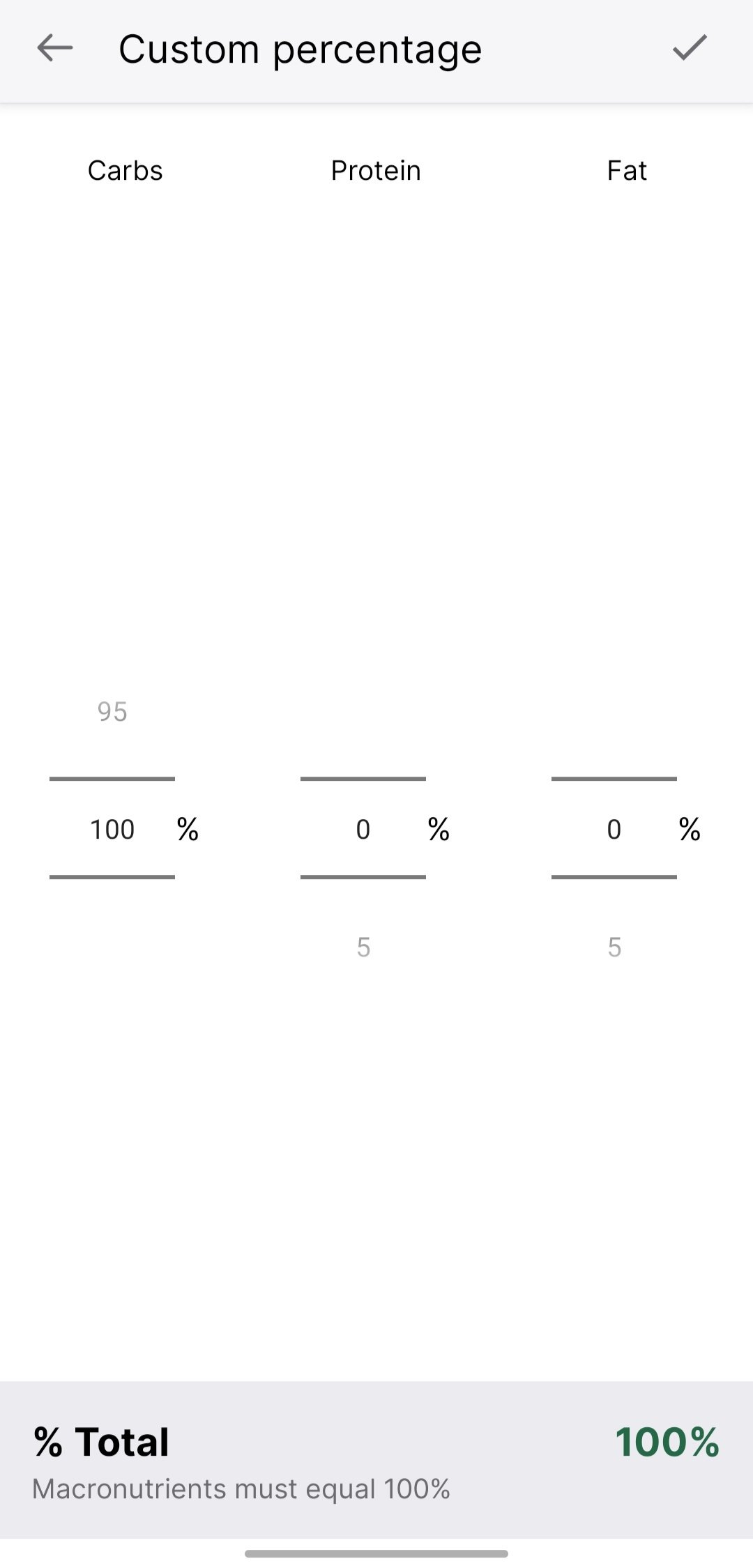I understand eating back exercise calories, but if you don't all your macro nutrients are skewed

Answers
-
Um, what? I don't understand what you mean exactly, but I don't think so. I feel like you're mixing two different concepts, maybe?
Ignoring MFP for a moment, generically there are two ways to set macronutrient goals: Explicit amounts in grams, or percent of total calories eaten.
The "percent of calories eaten" method is simple, and works fine for most people. It's probably the most common method. When using that method, we'd apply that percent to any/all calories we eat. If strictly compliant, I'd eat more calories of protein, fats and carbs on high-exercise days, fewer on no-exercise days. The percentages would be the same, though, exercise or no exercise. That's exactly how it's implemented in free MFP. They didn't make it up. It's a standard practice.
As long as you hit the minimum grams in your base calorie goal - even if you have extra calories available to eat that you didn't eat - things are OK, if you like using the percentage scheme. Yes, it doesn't give you that goal on today's page, but it's easy enough to find.
Some people want finer-grained management of their macronutrients, and choose to set macronutrient goals in grams, usually thinking of those grams as a minimum or maximum for a given macro. Those people would target the same minimum or maximum grams of those macros on high-calorie days and on low-calorie days. This is also a pretty standard practice.
Obviously, these latter people can't vary calories from day to day but stick to exact gram goals for each macro all of those days, because each macro has a characteristic approximate number of calories per gram: Protein and carbs have about 4 calories per gram, fats have about 9 calories per gram.
About the only way to hit the same exact number of grams of all macros at varied calories would be to use alcohol to fill the calorie gap on high-calorie days. Alcohol has calories, about 7 per gram, but isn't a carb, fat or protein. (I don't recommend that strategy. 😆)
So, when setting macro goals in grams, some need to be OK to go over (or under) to balance things out calorically.
If you want to set specific gram goals for macronutrients and not have them all change proportionately when exercise adds calories, get premium MFP. There, you can either not add exercise calories (which I wouldn't personally do), or you can tell MFP where to add the extra calories. That's specified as another set of percents.
I have premium. Personally, I set minimum grams for protein and fats, but am OK if I go over those, not so OK if under. I literally don't care how many carbs I eat, high or low, so I add all exercise calories there so calories balance. I'm not saying everyone should do it that way; that's just my preference.
This is what my relevant settings pages looks like in the phone/tablet app:
I don't know how/whether you can change those settings in web browser MFP, but do know that they're applied to calorie allocation in web browser MFP once set in the app.
0
Categories
- All Categories
- 1.4M Health, Wellness and Goals
- 398.1K Introduce Yourself
- 44.7K Getting Started
- 261K Health and Weight Loss
- 176.4K Food and Nutrition
- 47.7K Recipes
- 233K Fitness and Exercise
- 462 Sleep, Mindfulness and Overall Wellness
- 6.5K Goal: Maintaining Weight
- 8.7K Goal: Gaining Weight and Body Building
- 153.5K Motivation and Support
- 8.4K Challenges
- 1.4K Debate Club
- 96.5K Chit-Chat
- 2.6K Fun and Games
- 4.8K MyFitnessPal Information
- 12 News and Announcements
- 21 MyFitnessPal Academy
- 1.5K Feature Suggestions and Ideas
- 3.2K MyFitnessPal Tech Support Questions


